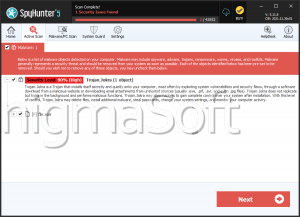CrowdStrike Scam
CrowdStrike, a prominent cybersecurity firm, inadvertently triggered widespread system outages with an erroneous Windows update on July 19, 2024. This technical mishap not only disrupted operations but also opened a window of opportunity for cybercriminals to exploit vulnerable systems for threatening activities.
Table of Contents
Malware Distribution via Fake Updates
One of the primary methods cybercriminals employed was distributing malware disguised as legitimate CrowdStrike updates. These fraudulent updates included:
- The Remcos RAT Targeting BBVA Bank Customers: A targeted campaign aimed at BBVA bank customers utilized a fake CrowdStrike Hotfix update. Disguised as essential software maintenance, this update instead installed the Remcos Remote Access Trojan (RAT). This malware enables unauthorized remote access to infected computers, facilitating espionage, data theft, and further compromise of sensitive systems.
- Data Wiper via Phishing Emails: In another instance, cybercriminals distributed emails posing as CrowdStrike updates. These emails instructed recipients to download a ZIP file purportedly containing a necessary security patch. However, the file actually housed a data wiper malware. Data wipers are designed to irreversibly erase or corrupt data on affected systems, causing severe operational and data loss implications for victims.
Schemes Exploiting the Incident
Taking advantage of the chaos caused by CrowdStrike's update error, fraudsters launched various fraudulent schemes:
- Fake Cryptocurrency Tokens: Fraudsters promoted fictitious tokens like $CROWDSTRIKE or $CROWDSTROKE, enticing unsuspecting individuals to divulge personal information or transfer cryptocurrency under pretenses.
- Compensation Offers: By impersonating legitimate entities, fraudsters offer compensation to affected users. These offers aimed to trick victims into disclosing sensitive information, paying for nonexistent services, or granting remote access to their computers. Such actions could lead to additional malware infections, financial losses, and data breaches.
Distribution Channels and Techniques
Fraudsters utilized diverse channels and deceptive techniques to propagate their schemes:
- Phishing Emails: Fake CrowdStrike update emails were widely distributed, exploiting trust in legitimate software updates to deceive recipients into downloading malware.
- Fake Websites and Social Engineering: Fraudsters created counterfeit websites resembling legitimate services or intranet portals (e.g., BBVA Intranet), tricking users into installing malicious software.
- Compromised Social Media Accounts: Fraudulent updates were also disseminated through compromised accounts on platforms like X (formerly Twitter), leveraging a broad audience to spread malicious links and content.
The incident involving CrowdStrike's faulty update underscored the critical need for robust cybersecurity measures and user vigilance. Cybercriminals swiftly capitalized on the disruption caused by the update error, deploying sophisticated malware and orchestrating fraudulent schemes. Users and organizations alike must remain vigilant against phishing attempts, suspicious emails, and deceptive online tactics to lessen the risk of falling victim to such unsafe activities. Efforts by legitimate entities, such as Microsoft's release of a genuine fix, are pivotal in mitigating the fallout from such incidents and restoring trust in digital security measures.

